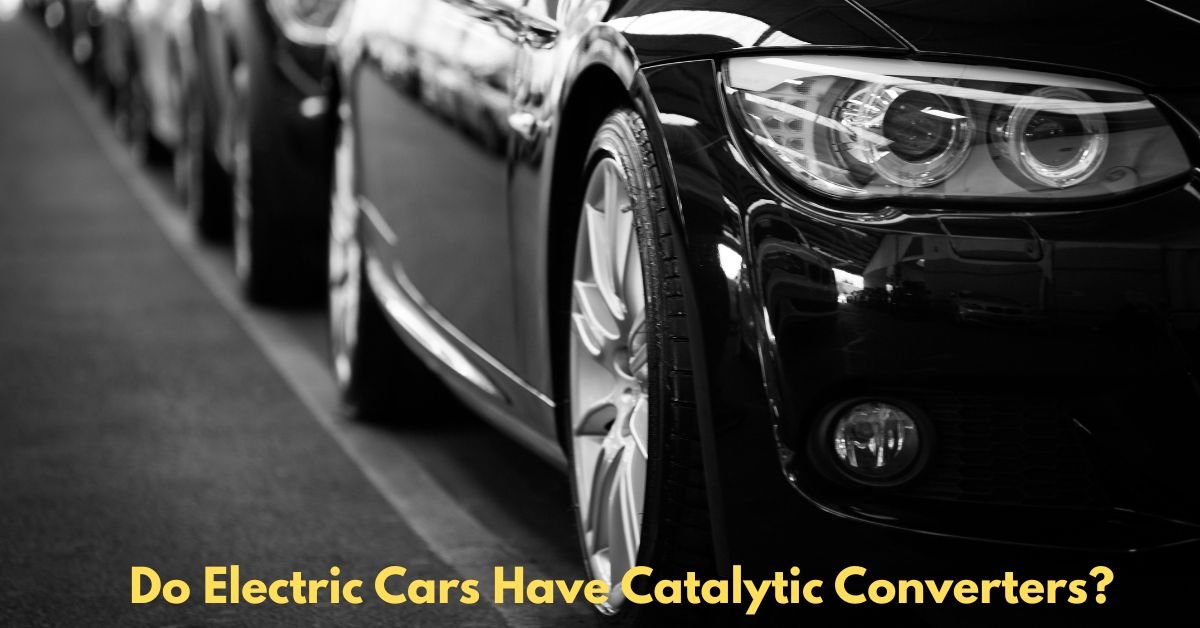As the automotive industry continues to embrace sustainability, the shift from gasoline and diesel-powered vehicles to electric vehicles (EVs) is gaining momentum. With growing concerns about climate change and air pollution, EVs are being celebrated as a cleaner, greener alternative. However, one question that often arises when discussing electric cars is whether they have catalytic converters, a crucial component in traditional internal combustion engine (ICE) vehicles. To answer this, we need to dive into the role of catalytic converters in conventional cars and why electric cars don’t require them.
Do Electric Cars Have Catalytic Converters?
What Is a Catalytic Converter?
A catalytic converter is a device found in the exhaust system of most gasoline and diesel vehicles. Its primary function is to reduce harmful emissions that are released from the engine. The converter does this by using a catalyst, usually a combination of platinum, palladium, and rhodium, to facilitate chemical reactions that break down harmful substances into less harmful ones. Specifically, it converts carbon monoxide (a toxic gas), hydrocarbons (unburned fuel), and nitrogen oxides (NOx) into less harmful gases such as carbon dioxide (CO2), nitrogen, and water vapor.
In essence, the catalytic converter helps to clean up the emissions produced by the engine before they are released into the atmosphere. As such, it is an essential component of a vehicle that runs on fossil fuels and is a key part of modern emissions control technology.
Do Electric Cars Need Catalytic Converters?
Electric cars, unlike their internal combustion engine (ICE) counterparts, do not burn fossil fuels such as gasoline or diesel. Instead, they rely on electric motors powered by rechargeable batteries to propel the vehicle. Since electric vehicles don’t rely on combustion to generate power, they produce no exhaust emissions. This means there’s no need for a catalytic converter to filter out harmful substances from the exhaust system.
Because electric cars don’t have exhaust systems at all, they do not emit pollutants like carbon monoxide, hydrocarbons, or nitrogen oxides. Consequently, there is no need for a catalytic converter to perform the job of cleaning the exhaust gases. Essentially, EVs are “zero-emission” vehicles, making them much more environmentally friendly compared to conventional vehicles.
Must Read: Can You Drive Car With Engine Light On?

The Difference Between Electric Cars and Traditional Vehicles
To further clarify why electric cars don’t need catalytic converters, let’s look at the key differences between electric vehicles and traditional vehicles:
- Energy Source: Traditional vehicles are powered by internal combustion engines that burn fuel to create energy. This burning process generates pollutants in the form of exhaust gases, necessitating the use of catalytic converters to reduce the environmental impact. On the other hand, electric cars are powered by batteries that store electrical energy, which is then used to power the motor. There are no combustion emissions in electric cars, eliminating the need for emission-reducing components like catalytic converters.
- Emissions: Internal combustion engine vehicles emit a wide variety of pollutants, including carbon monoxide, nitrogen oxides, and particulate matter, all of which are harmful to the environment and human health. Catalytic converters help to reduce these emissions. Electric vehicles, however, are considered zero-emission vehicles because they do not produce any exhaust gases during operation, which is a key reason why they don’t require catalytic converters.
- Environmental Impact: One of the driving forces behind the adoption of electric cars is their potential to reduce the environmental impact of transportation. By eliminating the need for fuel combustion, EVs significantly reduce the carbon footprint of driving. The absence of a catalytic converter is just one part of this larger picture of sustainability.
What Happens to the Emissions from Electric Cars?
While electric cars themselves don’t produce emissions, it’s important to recognize that the electricity used to charge them can still have an environmental impact, depending on how it’s generated. If the electricity comes from fossil fuels like coal or natural gas, then the overall environmental benefit of the electric vehicle may be reduced. However, if the electricity is sourced from renewable energy sources such as solar, wind, or hydropower, the environmental benefits of electric vehicles are greatly enhanced.
As more countries and regions adopt renewable energy sources, the overall emissions associated with EVs continue to decrease, making them an even more environmentally friendly option.
The Future of Catalytic Converters and Electric Cars
As the popularity of electric vehicles continues to grow, the need for traditional emissions control systems, like catalytic converters, will diminish. However, catalytic converters still play an essential role in reducing pollution from the millions of ICE vehicles currently on the road. Even though EVs don’t require catalytic converters, the shift towards electric vehicles could lead to a significant reduction in the demand for these components over time.
It’s also worth noting that hybrid vehicles, which combine an internal combustion engine with an electric motor, do require catalytic converters. These vehicles still burn fuel, and therefore they need catalytic converters to control the emissions produced by their combustion engines.

Conclusion
Electric cars do not have catalytic converters because they do not produce exhaust emissions in the first place. Since EVs operate on electricity and have no internal combustion engine, there is no need for a device to filter out harmful gases. The absence of catalytic converters is just one of the many ways in which electric vehicles contribute to reducing the environmental impact of transportation. As the world moves toward cleaner energy and electric mobility, we can expect to see fewer vehicles on the road with catalytic converters, making way for a cleaner and more sustainable future.
